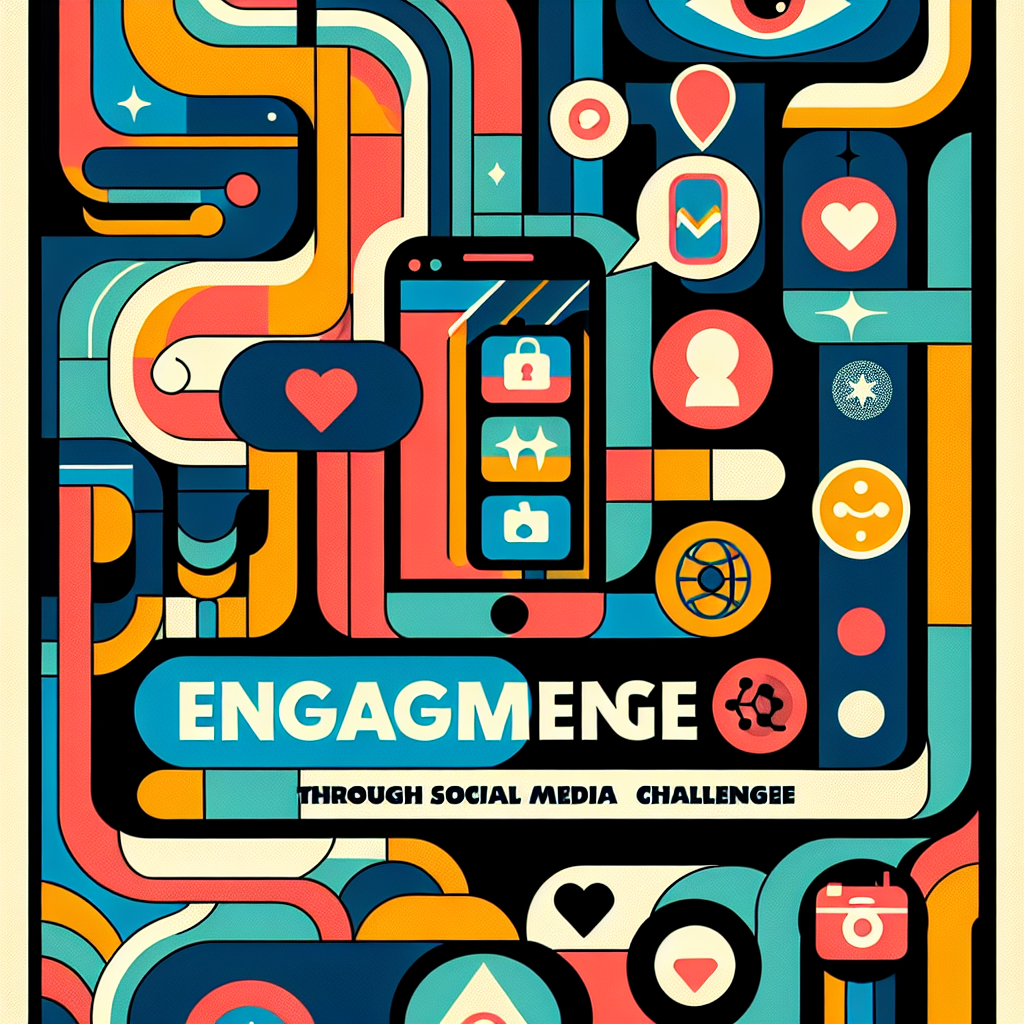Introduction: An Overview of Social Media Engagement
Did you know that an average person spends almost 2.5 hours a day on social media? As captivating as those scrolling sessions can be, it’s the interaction that people have with the content that truly matters. Social media engagement is the heartbeat of your online presence. But how well do you understand it? And more importantly, how can you improve it?
In this comprehensive guide, we aim to answer these questions and more. We’ll start by defining what social media engagement is, why it’s important, and walk you through the key metrics used to measure it. We’ll look at effective strategies to boost your engagement, and introduce handy tools to aid in this process.
Then, we’ll explore advanced techniques to craft engagement-worthy content, optimize post timing, and engage in social listening. We’ll also touch upon tactics such as asking questions, running polls, and leveraging social proof to create interaction.
We’re not stopping there. This guide will also discuss the concept of the social media engagement process, the steps involved, common pitfalls, and how to amplify it. We’ll also look at the exciting world of social media challenges and how they can help boost your brand’s visibility and engagement.
Are you ready to rev up your social media engagement and create a more meaningful and interactive presence online? Let’s get started!
Understanding Engagement in Social Media
Defining Social Media Engagement
Engagement on social media relates to how audiences interact with content. It includes likes, comments, shares, clicks, and mentions.
These interactions are valuable as they indicate user interest and content relevance.
Key Engagement Metrics
To evaluate social media engagement, consider these metrics:
- Likes: The simplest form of acknowledgment from users.
- Shares: Users distribute your content to their own network, amplifying reach.
- Comments: Indicates a deeper level of interaction.
- Clicks: Shows interest in more detailed information.
- Mentions: When users tag your brand in their posts, expanding your visibility.
Why Engagement Matters
Engagement impacts how social media algorithms rank content. Higher engagement often leads to increased exposure.
Building strong engagement can:
- Enhance brand visibility.
- Foster community growth.
- Improve customer loyalty.
Strategies to Enhance Engagement
Boosting engagement involves tailored strategies:
- Content Quality: Post engaging and high-quality content regularly to attract attention.
- Audience Interaction: Respond to comments and messages promptly to build relationships.
- Influencer Collaborations: Partner with influencers to tap into their follower base.
- Contests and Giveaways: Generate excitement and interaction through promotions.
- Analytics: Use tools to track and understand what content resonates best.
Social Media Engagement Tools
Several tools help measure and enhance social media engagement:
| Tool | Features |
|---|---|
| Hootsuite | Scheduling, analytics, and audience engagement tracking. |
| Buffer | Content planning, performance analysis, and insights. |
| Sprout Social | Detailed reporting, social listening, and engagement metrics. |
For more information on social media engagement strategies, you may refer to a detailed guide from Forbes.
Understanding and leveraging useful metrics can take your social media presence to the next level. Ensure you’re focusing on what matters most for growth and connection.
Crafting Social Media Engagement Techniques
Creating Engagement-Worthy Content
Increasing your social media engagement starts with quality content. Effective content triggers emotions, solves problems, answers questions, entertains or educates. It has to be valuable to your audience in some way. Use a blend of content types to keep things exciting, such as images, videos, infographics, and blog posts.
Utilizing User-Generated Content
User-generated content (UGC) is a powerful engagement tool. UGC is any type of content — photos, videos, text, reviews — created by people rather than brands. Running a UGC campaign can quickly increase your volume of social media content while also encouraging an active and engaged audience.
Optimizing Post Timing
Understanding when your audience is most active can help you optimize your posting schedule and increase engagement. Each social media platform has peak times where user activity is highest. Use social media analytics tools to understand when are the best times for your specific audience.
Engage in Social Listening
Social listening involves tracking conversations around specific phrases, words or brands, then leveraging those insights to create content or rectify issues. With this tool, you can uncover trends and topics your target audience is in tune with and use that to guide your engagement strategy.
Boosting Interaction Through Engagement Tactics
Ask Questions and Run Polls
An excellent way to generate engagement and learn more about your audience is by asking questions and running polls. This tactic will not only give you insightful information about your audience, but it also increases your engagement rate by encouraging your followers to interact with your post.
Host Live Videos
Live videos are growing in popularity due to their ability to drive real-time engagement. They are interactive, engaging, and build a sense of community. With features like comments and reactions, they greatly enhance user engagement.
Leverage Social Proof
Social proof, including testimonials, ratings, and case studies, can enhance credibility and trust with your audience. Sharing customer testimonials or user-generated content on your social media accounts can significantly boost engagements and conversions.
Use Calls to Action
Calls to action (CTA) proactively invite your audience to engage. This could be as simple as “like if you agree” or “share this post with a friend”. A compelling CTA can make a big difference in your post’s engagement rates.
Top Social Media Management Tools
In addition to Hootsuite, Buffer and Sprout Social, there are other tools to consider:
| Tool | Features |
|---|---|
| CoSchedule | Content scheduling, social media calendar, collaboration tools. |
| Canva | Easy-to-use design tool for creating appealing visual content. |
| Mention | Social listening, influencer engagement, competitive analysis. |
Remember, optimizing your social media engagement strategy doesn’t require a major overhaul. Instead, focus on small, consistent changes. For additional tips on optimizing your social media presence, check out this in-depth article from Neil Patel.
Understanding the Social Media Engagement Process
What is the Social Media Engagement Process?
The social media engagement process refers to the series of ongoing activities and interactions that individuals and brands undertake to build and maintain a connection with their audience on social media platforms. It’s a cycle that helps nurture relationships and fosters a community around a brand, leading to a collaborative culture between creators and consumers.
Steps in the Engagement Process
To cultivate effective engagement, follow these steps:
- Create Relevant Content: Start by developing content that resonates with your target audience’s needs and interests. This can range from educational posts to entertaining videos.
- Encourage Interaction: Craft each post with a clear intention to prompt interactions. Asking open-ended questions or incorporating polls are good strategies.
- Monitor and Respond: Engaging is not just about putting content out there; it’s about actively participating in discussions. Monitor your posts for comments and messages and reply promptly to foster conversations.
- Analyze Performance: Use analytics to gauge which content performs best, understand audience behavior, and tailor future content accordingly.
- Optimize Strategy: Continually refine your engagement tactics based on insights from performance analysis and feedback. The aim is to enhance and adapt approaches to keep up with trends and audience shifts.
Common Pitfalls in the Engagement Process
Be aware of potential pitfalls:
- Ignored Feedback: Failing to address feedback or negative comments can alienate your audience. Always respond constructively.
- Over-Automation: While automation tools are useful, relying too heavily on them can make interactions feel impersonal.
- Inconsistent Posting: Lack of regular content can result in decreased visibility and engagement. Maintain a consistent schedule.
Amplifying the Engagement Process
To enhance the engagement process, consider these tactics:
- Collaborate with Influencers: Partner with influencers to access their networks and boost visibility.
- Invest in Ads: Social media ads can increase reach and engagement by targeting specific audience segments.
- Host Interactive Events: Webinars, Q&A sessions, and live broadcasts engage audiences by allowing them to participate in real-time.
The engagement process is an ongoing cycle that demands attention and dedication. Prioritizing genuine interaction over mere clicks can lead to meaningful relationships and a strong online presence. For more insights into always keeping the engagement wheel turning, check out a comprehensive exploration on Social Media Examiner.
Generating Engagement with Social Media Challenges
What are Social Media Challenges?
Social media challenges involve prompting users to participate in a specific activity and share their experiences or results online. These challenges often go viral, spreading quickly across multiple platforms as participants nominate friends and followers to join in.
Benefits of Running Social Media Challenges
Running a successful social media challenge can yield several benefits for your brand:
- Increased Visibility: Challenges are organic in nature and can lead to widespread sharing, getting your brand in front of new audiences.
- Enhanced Engagement: Participants actively engage by creating content, tagging friends, and interacting with the brand’s original post.
- Community Building: Creates a sense of belonging and encourages people to connect over shared experiences.
- User-Generated Content: Collects content created by users, which can be repurposed for marketing efforts.
Crafting the Perfect Social Media Challenge
To design a compelling social media challenge, consider the following steps:
- Select a Theme: Choose a theme that aligns with your brand values and resonates with your audience.
- Set Clear Rules: Define the steps participants must take to join and ensure rules are easy to understand and follow.
- Create a Unique Hashtag: A catchy and unique hashtag helps track participation and keeps all submissions organized.
- Invite Influencers: Collaborate with influencers to kickstart the challenge and reach broader networks.
- Engage Continuously: Keep the momentum going by engaging with participants, sharing their content, and acknowledging their efforts.
Examples of Successful Social Media Challenges
Several brands have created successful challenges that saw high engagement rates:
– #IceBucketChallenge: Raised awareness and funds for ALS, encouraging participants to pour a bucket of ice water over themselves and challenge others to do the same.
– #BottleCapChallenge: Involved unscrewing a bottle cap with a kick, seeing significant participation from celebrities and social media users alike.
Common Challenges and Solutions
While running a social media challenge, be mindful of potential pitfalls:
- Challenge Fatigue: Overloading audiences with too many challenges can lead to disengagement. Space them out to maintain interest.
- Lack of Clarity: Ensure that challenge instructions are clear to avoid confusion and maximize participation.
- Inadequate Promotion: Promote the challenge effectively across all platforms to increase participation rates.
A robust social media challenge strategy can maximize user interaction and promote active participation. For more effective ways to drive engagement through creative tactics, explore insightful resources at HubSpot.
Summing Up: Keys to Social Media Engagement
To wrap it up, effective social media engagement revolves around understanding and tracking key metrics like likes, shares, comments, clicks, and mentions. It’s the driving force behind achieving higher visibility, fostering community growth, and enhancing customer loyalty.
Successful strategies for engaging users range from consistently posting high-quality content, promptly interacting with audiences, partnering with influencers, organizing contests, to efficiently utilizing analytical tools. Choices of tools include Hootsuite, Buffer, and Sprout Social that aid in measurement and enrichment of social media engagement. Remember, boosting interactions and understanding your audience is a continuous process of refinement based on insights.
Frequently Asked Questions – FAQs
Is social media engagement crucial?
Yes, social media engagement is significant. It allows brands to connect with their audience, enhance visibility, drive brand loyalty, and improve their social media algorithm ranking.
What are some strategies for improving social media engagement?
You can improve your social media engagement through quality content, timely audience interaction, influencer partnerships, contests, and comprehensive use of analytics.
Which tools can assist in measuring and enhancing social media engagement?
Tools like Hootsuite, Buffer, and Sprout Social can help measure and enhance social media engagement. They offer features like scheduling, analytics, and tracking audience engagement.






